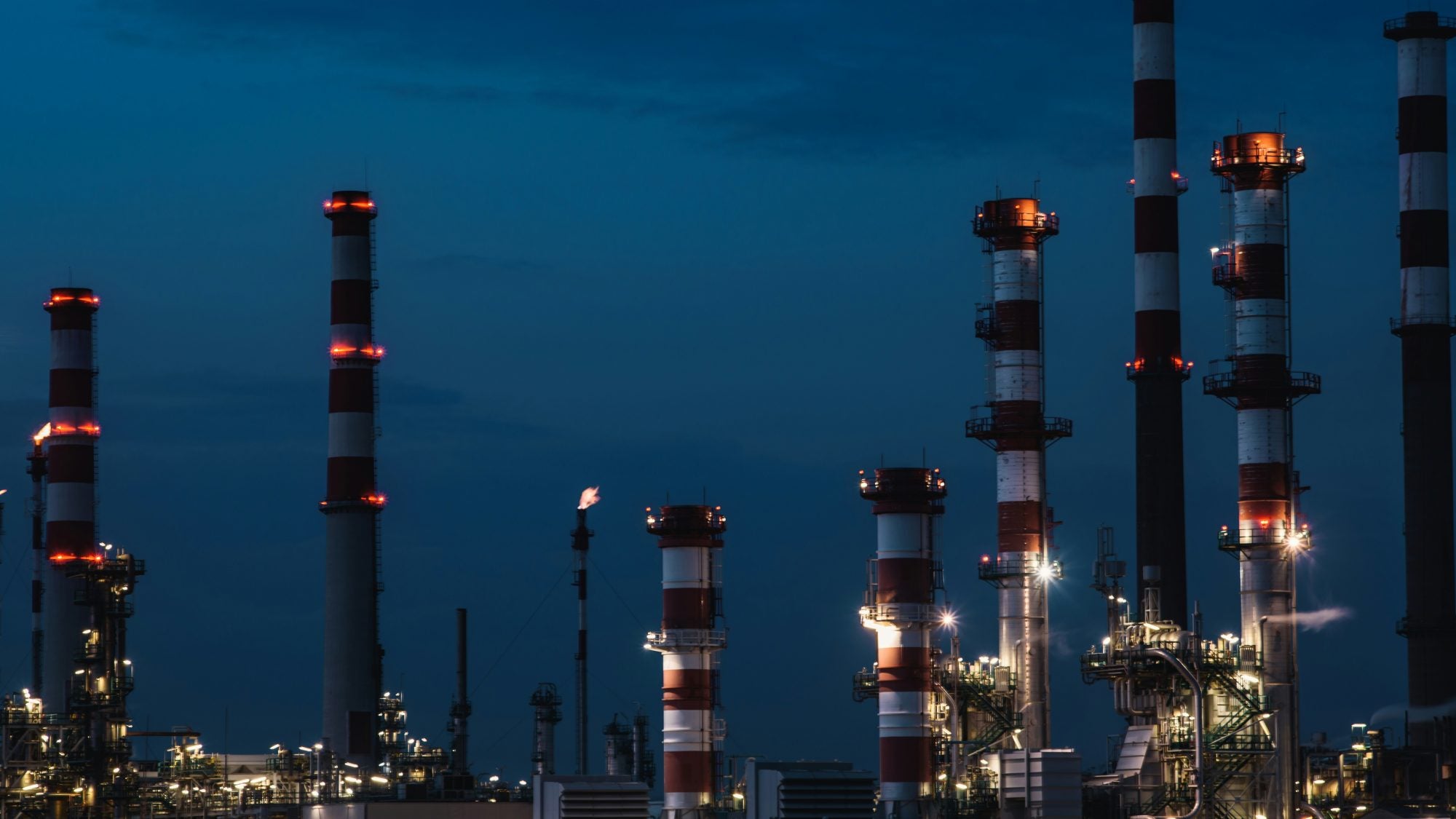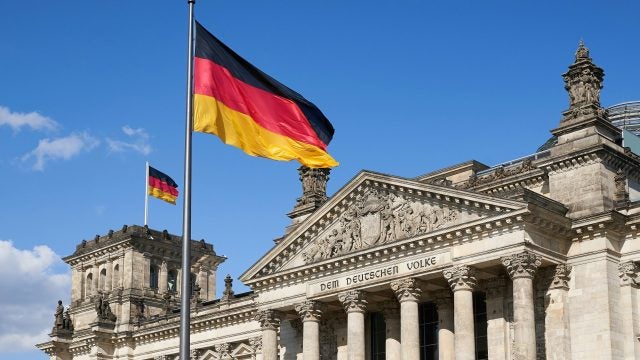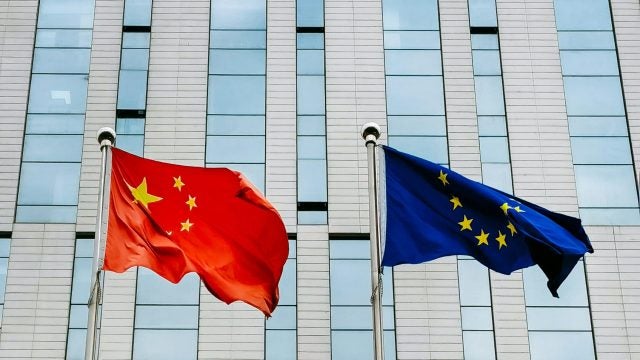
Title: Trade Tensions, Oil Sanctions, and the Future of Middle East Oil
For oil producers in the Middle East, mounting external pressure from trade tensions, tariffs, and oil sanctions presents headwinds to government revenue and regional stability. Oil production is becoming a battle for market share rather than a collective effort to increase prices. We can identify three key effects for oil producers in the Middle East entering a period of heightened trade tensions and a potential global economic slowdown: (1) the Middle East-Asia interdependency will make both sides suffer a downturn, (2) competition over market share will disadvantage weaker regional producers, (3) access to capital and borrowing will define how countries can weather a longer downturn in oil prices. For policymakers in the Gulf, maintaining a close eye on key export markets in Asia may present further opportunities for trade and investment agreements with a longer-term perspective.
Introduction
On April 2, the Trump Administration announced global reciprocal tariffs, including the Middle East. Gulf partners were spared from high reciprocal tariffs, with the UAE, Oman, Qatar, Bahrain, Kuwait, and Saudi Arabia holding at the minimal threshold of across-the-board tariffs (excluding energy products like oil, gas, and refined products) of 10 percent. The real threat to regional oil producers is not that U.S. tariffs will make Middle Eastern oil and gas exports less competitive in the U.S. market—since the United States imports little Gulf oil—but rather the broader economic uncertainty these tariffs create, especially in Asian markets closely linked to Gulf economies. The risk of recession in the U.S. and a general lowering of global growth expectations create a cascade of economic effects for the Gulf’s energy exporters: lower export revenues, weaker fiscal capacity to spend on domestic projects, and higher cost of capital for borrowing.
As a preemptive response, the OPEC+ group has begun unwinding cuts and will increase production by about 2.2 million barrels per day by the end of 2025, but with the caveat that the group might reconsider production volume given shifts in market conditions. OPEC+ has long planned to unwind production cuts in an effort to balance the quotas of members who bore the brunt of cuts since 2022, particularly Saudi Arabia, which has the greatest spare capacity and has made the most significant cuts to its production. In anticipation of Trump’s tariffs, eight group members made a surprising decision to further increase production, causing oil prices to fall by 6 percent on trading immediately. Moreover, Saudi Arabia, Russia, Iraq, UAE, Kuwait, Kazakhstan, Algeria, and Oman met virtually to review market conditions and decided to gradually raise collective output by 411,000 barrels per day starting in May. Many analysts now expect an increase of just under 140,000 barrels per day starting next month. On May 3, OPEC+ agreed to further accelerate production a for a second consecutive month. Oil production has become a battle for market share rather than a collective effort to bolster prices.
The Tariff Impact Spreads Beyond Oil
The Trump Administration’s decisions to apply tariffs on trade partners—adversaries and allies alike—has changed market sentiment, as many banks and their economists now see a recession as at least a 35 percent probability (and rising) for the US this year. Wood Mackenzie, an energy data and analytics firm, estimates that U.S. tariffs imposed on China at a level of 60 percent would slow down global growth and overall demand for oil and other liquid fuels, driving down oil prices from $12 to $7 per barrel. The International Monetary Fund has cut global GDP growth expectations to 2.8 percent for this year, down from its 3.3 percent forecast just in January 2025.
Although sanctions on oil exports from Venezuela, Iran, and Russia should, in principle, create upward pressure on prices and benefit other suppliers, there has been little indication so far that enforcement or severe supply restrictions are a significant counter-balance to a more bearish global demand outlook, with prices hovering in the low $70s per barrel since Trump took office. Coupled with plentiful supply and spare capacity within OPEC and some continued overproduction of the OPEC+ agreement by Kazakhstan, Russia, the UAE, and Iraq, the downward pressures on oil prices outweigh the potential upside from sanctions enforcement. The imposition of additional tariffs, including on key supplies and components, like casings and tubing, increases the cost of production while demand softens global oil prices, leading some in the U.S. industry to reduce company spending and expansion rather than plan to increase domestic production. Globally, the oil industry seems more poised for retreat.
Gulf-Asia Interdependency Under Threat
Lower prices in the Middle East also significantly affect public finance, leading to further disaggregation between wealthier and poorer producer states in the region. We can identify three key effects for oil producers in the Middle East as we enter a period of heightened trade tensions and a potential global economic slowdown: 1) the Middle East-Asia interdependency will make both sides suffer a downturn; 2) a battle for market share will ensue, leaving weaker regional producers at a disadvantage; 3) access to capital and borrowing will define how countries can weather a longer downturn in oil prices.
First, Middle Eastern oil producers are increasingly tied to Asian markets. While their oil may not go directly to the United States, it fuels production in China, India, South Korea, Japan, and Vietnam, whose goods do. As Asian economies slow down due to U.S. tariffs, their appetite for oil from the Middle East oil exporters will diminish. The Middle East-Asia interdependency is increasingly under pressure. Beyond China, the implementation of tariffs on a host of other Asian economies will collectively threaten the states in the Gulf Cooperation Council (GCC) and the Middle East. A weaker Asia is generally bad for the Gulf as it weakens oil demand and diminishes Asian tourism to these states. Moreover, the investment environment for Gulf sovereign investment allocations across East, Southeast, and South Asia will deteriorate, affecting countries where we see not just Gulf investment in petrochemicals and refineries but also growing investment in technology and renewable energy projects. For example, Qatar and Saudi Arabia are the most exposed to Asia as their key export markets. According to the United Nations Council for Trade and Development (UNCTAD) and the Hongkong and Shanghai Banking Corporation (HSBC), more than 65 percent of Qatar’s exports go to Asia, with about 20 percent to China and an equivalent proportion to India and the ASEAN +6 combined. For Saudi Arabia, about 55 percent of its total exports are Asian-bound.
Second, the OPEC+ alliance is ramping up production with an understanding that lower prices will persist. These producers, especially among the GCC states, know that competition for market share will depend on national oil companies maintaining healthy balance sheet and the ability to shield or adjust public finances to accommodate lower revenues. We expect fierce competition among the GCC oil exporters between Saudi Arabia and the UAE and, more importantly, between stronger and weaker producers. Weaker producers include Iraq and those under sanctions like Iran and Libya, while tiny producers like Syria will be desperate to maintain revenue streams and access to export markets.
Third, some MENA producers are better positioned than others. However, despite progress on diversification since the oil price downturn in 2014, public finances remain highly dependent on oil revenues. To detach government spending and investment from oil revenues, GCC countries have turned to debt markets to finance deficits during periods of lower oil prices, helping to smooth public consumption over the ups and downs of the oil cycle. However, borrowing could become complicated for some more than others, including Saudi Arabia. Borrowing in bond and syndicated loan markets by Saudi public entities continues to expand, with a slew of issuances in early 2025 with outstanding debt increasing $100 billion by 2027. This is a case of a country able to borrow. However, the yield curve on U.S. Treasuries continues to suggest that investors expect higher inflation and less likely cuts to Fed borrowing rates, which can affect the cost of capital on a global scale if U.S. interest rates on longer-term debt trend higher. On the other hand, for many regional producers, such capital is already difficult or inaccessible to them and their national oil companies and state-related entities because of weaker credit and “above ground” political risk. Therefore, co-investments and expansion projects within the region and especially with Asian partners may face greater challenges as investment allocations from oil-producing states and their national oil companies are more constrained.
Navigating the Future for Oil Producers
These global economic headwinds, amplified by U.S. tariff policy and uncertainties in how markets will respond, how investment in the United States may be deterred, and how global economic activity could become both more narrow in scope on a bilateral basis and more limited in volume, have put the Middle East’s oil industry under immense pressure to deliver revenues to public finances and to edge out competitors. In the near term, Gulf states will need to evaluate the efficacy of U.S. concerns for technology transfer and investment agreements with China. The Trump Administration’s tariff policies will drive the Middle East and particularly the Gulf states closer to partners in Asia, especially China. China could commit to foreign investment and joint ventures in domestic manufacturing capacity in non-oil sectors like solar technology and EVs in the Gulf, even if their demand for oil declines. However, Gulf policymakers may find the U.S.’ imposition of trade restrictions on Gulf partners and investment ties with China untenable. Likewise, U.S. policymakers will need to understand the fiscal pressures on MENA oil producers to reduce their inevitable exposure to Asian trade and investment and either make accommodations or offer incentives in technology access and trade and investment opportunities in the US.
In light of President Trump’s planned visit to Saudi Arabia and other Gulf states in May, a few policy recommendations may be relevant.
1) US diplomats and trade advisors may want to consider how fiscal constraints from lower oil prices affect Gulf partners, their sovereign wealth funds, and state investment vehicles’ abilities to direct investment into the United States in the near term. In sectors with these opportunities, especially access to U.S. technology and even the ability to export local manufacturing to the United States (in solar panels, for example), there can be some areas of synergy and mutual benefit. Carve-outs and tariff exemptions for solar panels manufactured in the Gulf with part Chinese ownership may be a policy consideration.
2) Lower oil prices also affect U.S. production and the investment environment, such that the Trump Administration should expect some dealmaking from a Gulf national oil company perspective. There may be interest in investing in U.S. strategic assets, including LNG export facilities, as well as onshore oil and gas production by private firms willing to sell. This will require a consideration of the efficacy of selling strategic energy assets to foreign partners.
3) The Trump Administration intends to encourage a lower cost of borrowing (lower interest rates) by the US Federal Reserve. However, that policy prescription risks politicizing a hallmark of U.S. monetary policy independence and the global view of U.S. creditworthiness. Gulf finance ministers will be watching closely how the White House and the Federal Reserve navigate these tensions, which could impact their willingness to hold U.S. long-term debt.
. . .
Dr. Karen E. Young is a Senior Research Scholar at Columbia University in the Center on Global Energy Policy. She was a founding director of the Program on Economics and Energy at the Middle East Institute and remains a senior fellow.
Image Credit: Maksym Kaharlytskyi, Unsplash Content License, via Unsplash.
Recommended Articles

This article contends that South Africa’s 2025 G20 presidency presents a critical opening to shape governance of critical mineral supply chains, essential for renewable energy, digital economies, and national…

Germany’s economy is being throttled by a more competitive China that has usurped its previous manufacturing dominance in many industries. In response, Germany has doubled down on the China bet…

In 2021, the European Union (EU) attempted to assert itself in the Indo-Pacific arena to increase its geopolitical relevance by releasing an ambitious and multifaceted Indo-Pacific Strategy. However, findings from…